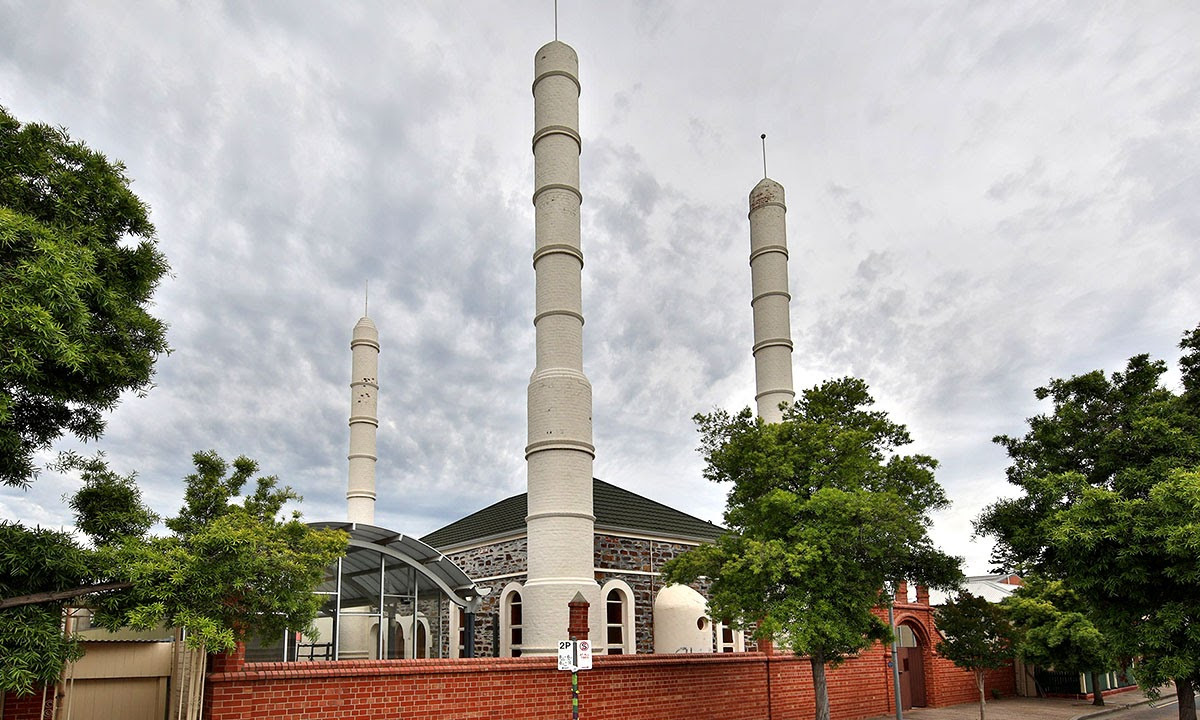

In 1892 Wade began importing camels and recruiting Afghan cameleers for the recently formed Bourke Carrying Co. An Afghan settlement, with a mosque as its central focus, developed on the outskirts of Bourke, where Wade had his house. In 1895 he was majority shareholder of the company. With the firm’s secretary George Tull, he made several trips to Karachi, India (Pakistan), to purchase camels and recruit drivers. Returning from a trip in 1893, Gunny Khan accused Wade of abandoning sixteen indentured cameleers, but Wade claimed that the men had refused to work. The dispute was resolved when he paid for their food and offered return passages to India. He subsequently sued Gunny in the South Australian Supreme Court over the allegation. In one year in the late 1890s Wade reputedly landed 750 camels at Port Augusta, South Australia—some 500 in one shipment. The company served western New South Wales and Queensland, including the copper fields of Mount Garnet, Chillagoe and Mungana and the OK mines. A depot was established at Cloncurry, where Sayed Omar, the ghantown’s religious leader, was Wade’s agent. Dressed like an English gentleman and riding a white camel, Wade was sometimes seen on the copper fields supervising his men.
On 10 June 1895 in Perth he married Dublin-born Emily Ozadelle, née Murcutt, a widow with one son. They had three sons, one of whom died in infancy, and four daughters. The drought of 1901-02 benefited Wade’s business. In 1903 he purchased Wangamanna station, a grazing property thirty-five miles (56 km) east of Wanaaring, New South Wales. He established a camel breeding and carrying business at the station, where the Afghan settlement had a mosque. His men were put to work carrying in the district as well as harvesting and bagging salt from the property’s lakes and transporting it to Bourke to be sent by rail to Sydney. His monopoly of the cartage business in the Warrego region sometimes led to violent clashes with European teamsters.
Wade was a flamboyant and stylish entrepreneur, with a passion for horse racing on the country circuits. His employees treated him with such respect that he was known locally as an ‘Afghan prince’. He issued a challenge for a race from Bourke to Wanaaring and back, between himself, riding a camel, and a European on horseback. The race resulted in victory for Wade, his rival’s horse having died from exhaustion at the halfway mark. He liked to be seen in restaurants, clubs and hotels.
In 1902 Wade was naturalized. He bought Northwood House, designed by Edmund Blacket, on the Lane Cove River, Sydney, and adjacent property in 1905, which he subdivided. According to local legend, he sometimes landed camels at Northwood wharf. His son attended The King’s School, Parramatta, in 1910-11, and his daughters were educated at private schools. By 1917 he had sold his Lane Cove land, having reputedly lost Northwood House in a poker game, and moved to Chatswood. He later had property at Redfern.
Although some attempted to ridicule Wade’s religious affiliation, he was widely respected as a man of ‘considerable intelligence and force of character’, and a successful businessman whose ‘word is as good as his bond.’ Recognizing that the rising costs of importing fodder made camel transport uneconomic in Far North Queensland, in 1905 he had purchased five steam traction engines in Sydney for £7000. These were intended to service the booming copper mines of North Queensland, employing European labour to operate the machines. In 1914-15 he offered his Australian camels and his contacts in Afghanistan to the Australian government for service in the Imperial Camel Corps against the Turks; the offer was accepted. Following the introduction of motorized transport into the outback in the 1920s, and the passage of the Camel Destruction Act (1925) in South Australia, he sold Wangamanna station. Many camels from its neglected stud escaped into the bush or were shot.
In October 1923 Wade left for Afghanistan. Next year he surrendered his Australian passport. His wife died in Sydney in 1926; he was said to be living in England in 1928. His children remained in Sydney, including his son Abdul Hamid (1900-1982), a taxi-driver who served in the Royal Australian Navy in World War II.
I agree to the terms outlined below:
You agree to upload and assign Mosqpedia Database the rights to use the content worldwide and in perpetuity across all current and future media platforms. Mosqpedia Database may edit, copy, adapt and translate your contribution.
The content will be distributed under the Creative Commons Attribution-Deed – Attribution-NonCommercial-NoDerivatives 4.0 International – Creative Commons
All data will be stored in line with data protection regulations.
I agree to the terms outlined below:
You agree to upload and assign Mosqpedia Database the rights to use the content worldwide and in perpetuity across all current and future media platforms. Mosqpedia Database may edit, copy, adapt and translate your contribution.
The content will be distributed under the Creative Commons Attribution-Deed – Attribution-NonCommercial-NoDerivatives 4.0 International – Creative Commons
All data will be stored in line with data protection regulations.